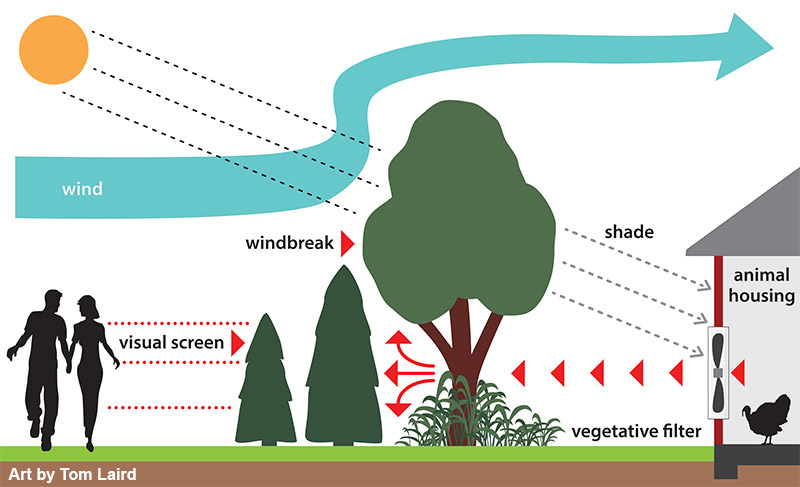Fast growing trees and shrubs provide a visual barrier around farm buildings or practices that potentially cause neighborhood concerns. The old adage, “out of sight, out of mind” is true. If non-farm neighbors can’t see something, they may be less likely to think about it or make complaints about it. “Out of sight, out of mind” is especially true if the tree buffer also controls odors and dust, causing an “out of sight, out of smell” affect.
Odors typically travel along the ground. When odors encounter a row of trees, the odor plume is disrupted and mixes with the prevailing wind, reducing odors. Ammonia gas is absorbed by plants, also reducing odors.

Dust from poultry buildings can retain odors, too. Plants cause some of the dust to fall out of the air plume, thereby reducing odors too.
Tree buffers provide visual and noise barriers, which helps with good neighbor relations. Windbreaks also help filter and capture nutrients from runoff and ground water through root absorption of up to an estimated 80% of the nitrogen and phosphorus in certain environments. Please read the following links for additional information.
Vegetative buffers should be designed based on multiple considerations, including but not limited to:
- Multiple species (deciduous and conifers)
- Growth rates should be varied between species
- Location and distance from barn fans
- Native species recommended
- Diversity of species to have better survival rate
- Spacing between rows
An extensive list of species, hardiness zones, and growth details is available by clicking here.
Technical assistance for buffers is available by contacting your local USDA Natural Resources Conservation Service (NRCS) office or your local Penn State Extension office.
